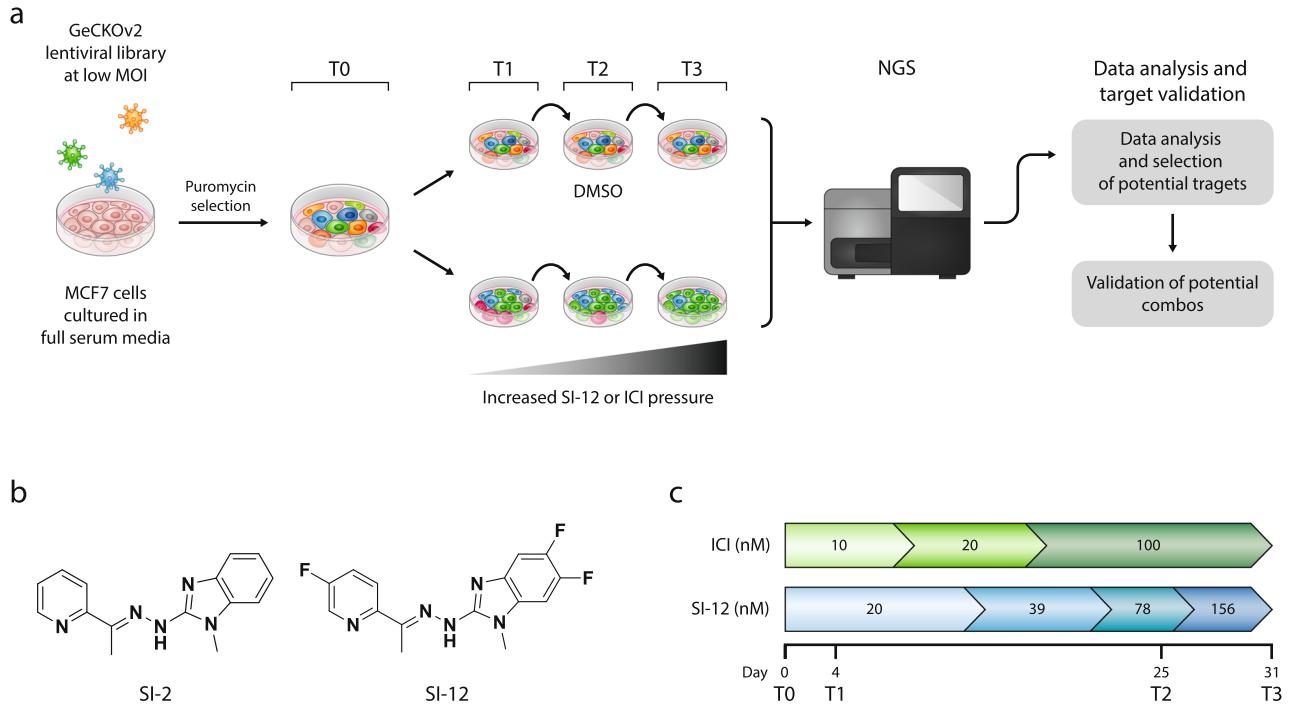Cas9 Stable Cell Line - MCF-7
Cat.No. : CSC-RO0028 Host Cell: MCF-7
Size: >1x10^6 cells/vial Validation: T7 Endonuclease I assay
Cat.No. : CSC-RO0028 Host Cell: MCF-7
Size: >1x10^6 cells/vial Validation: T7 Endonuclease I assay
| Cat. No. | CSC-RO0028 |
| Product Type | Cas9 overexpression stable cell line |
| Introduction | Clustered regularly interspaced palindromic repeats (CRISPR)/Cas9 is a gene-editing technology that contains two essential components: a guide RNA (gRNA) to match a target gene, and the Cas9 (CRISPR-associated protein 9) endonuclease which causes a double-stranded DNA break, allowing modifications to the genome via nonhomologous end joining (NHEJ) or homology-directed repair (HDR). |
| Cell Line Information | MCF-7-Cas9 cell line is engineered to stably overexpress Cas9 nuclease. The Cas9 nuclease in MCF-7-Cas9 cell line has been functionally validated using T7 Endonuclease I assay. In combination with separately transfected sgRNAs, MCF-7-Cas9 cell line can be used to efficiently generate targeted genomic modifications including gene knockout, gene knockin, gene mutagenesis, gene tagging etc. It is also an ideal cell line model for sgRNA screening and validation, either individually or in pools. |
| Target Gene | Cas9 |
| Host Cell | MCF-7 |
| Applications | 1) CRISPR genome editing, such as gene knockout (KO), gene knockin (KI), gene mutagenesis, gene tagging etc. 2) High-throughput sgRNA screening and validation |
| Quality Control | 1) T7E1 assay 2) Mycoplasma detection |
| Size Form | One vial of frozen cells, typically >1x10^6 cells/vial |
| Shipping | Dry ice |
| Storage | Liquid nitrogen |
| Species | Homo sapiens (Human) |
| Mycoplasma | Negative |
| Format | One frozen vial containing millions of cells |
| Storage | Liquid nitrogen |
| Safety Considerations |
The following safety precautions should be observed. 1. Use pipette aids to prevent ingestion and keep aerosols down to a minimum. 2. No eating, drinking or smoking while handling the stable line. 3. Wash hands after handling the stable line and before leaving the lab. 4. Decontaminate work surface with disinfectant or 70% ethanol before and after working with stable cells. 5. All waste should be considered hazardous. 6. Dispose of all liquid waste after each experiment and treat with bleach. |
| Ship | Dry ice |
Over 70% of breast tumors express the nuclear receptor (NR) estrogen receptor-α (ERα) and rely heavily on its signaling for tumor growth. The researchers used genome-scale CRISPR-Cas9 screens in MCF-7 breast cancer cells under SI-12 pharmacological pressure to find gene targets that enhance BC cell cytotoxicity. A parallel screen utilizing the ER inhibitor fulvestrant revealed insights into SRC-3 and ERα inhibitory actions. Validating findings from MCF-7 screenings in different cancer cell lines increased our understanding of SRC-3's role in carcinogenesis beyond breast cancer.
 Figure 1. In MCF-7 cells, the researchers performed a pooled CRISPR/Cas9 screening with the genome-wide single vector library GeCKOv2. Cells were treated to greater pharmacological pressure using SRC-3 inhibitors SI-12 or ICI to find genetic vulnerabilities for medication combinations. gDNA was obtained at three time periods, amplified by PCR in bar-coded areas, and evaluated by NGS. (Gilad Y, et al., 2021)
Figure 1. In MCF-7 cells, the researchers performed a pooled CRISPR/Cas9 screening with the genome-wide single vector library GeCKOv2. Cells were treated to greater pharmacological pressure using SRC-3 inhibitors SI-12 or ICI to find genetic vulnerabilities for medication combinations. gDNA was obtained at three time periods, amplified by PCR in bar-coded areas, and evaluated by NGS. (Gilad Y, et al., 2021)
Unlock the potential of genome-scale CRISPR-Cas9 screens with Creative Biogene's Cas9 Stable Cell Line-MCF-7. Engineered for stability and efficiency, this cell line ensures reliable Cas9 expression, empowering precise gene editing under pharmacological pressures like SI-12. Conduct parallel screens with confidence using inhibitors such as fulvestrant to explore SRC-3 and ERα inhibition synergies. Validate hits across diverse cancer cell lines effortlessly, gaining deeper insights into cancer biology and therapeutic targets.

Our promise to you:
Guaranteed product quality, expert customer support.
 24x7 CUSTOMER SERVICE
24x7 CUSTOMER SERVICE
 CONTACT US TO ORDER
CONTACT US TO ORDER